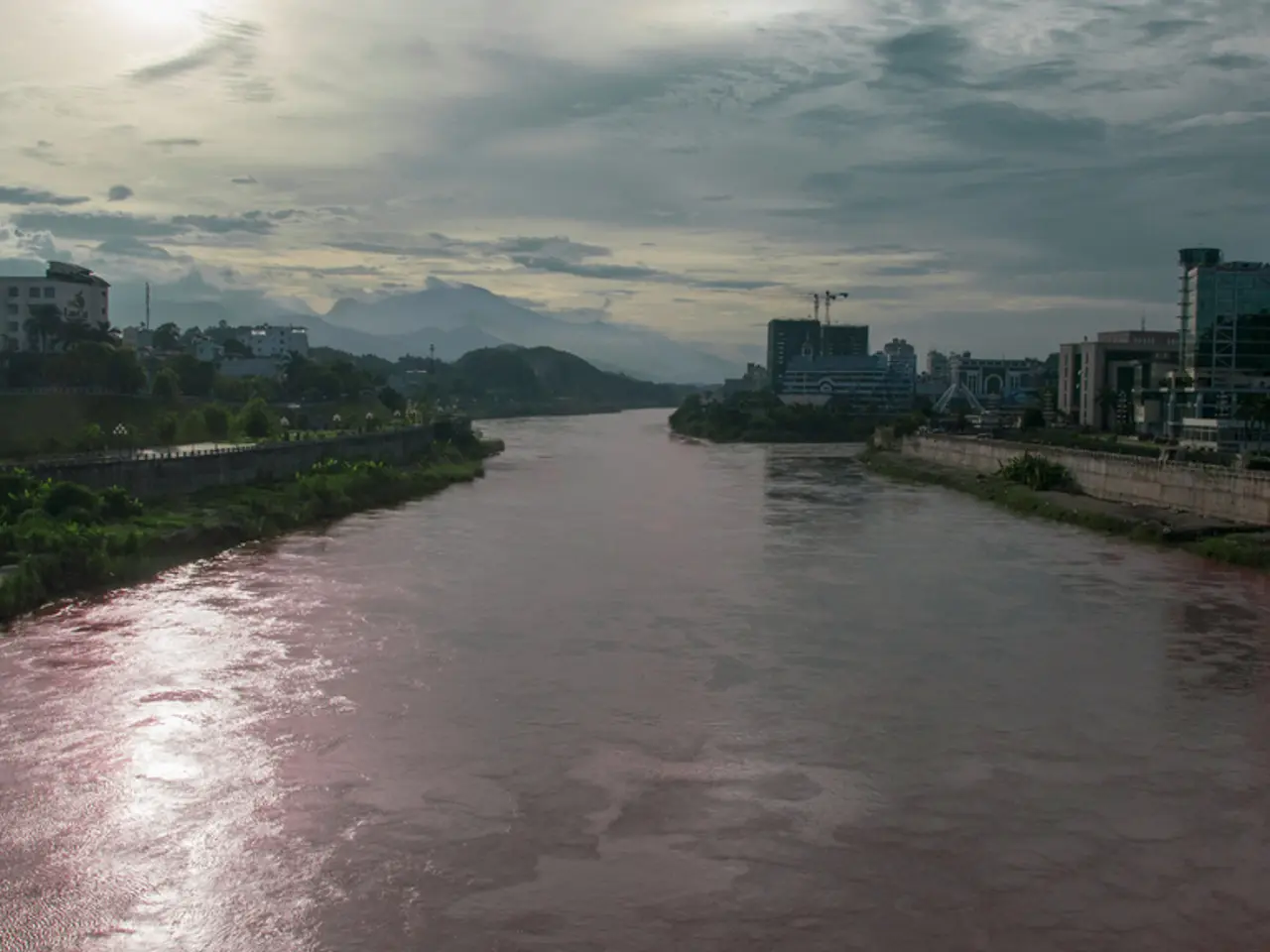China initiates building work on the globe's biggest hydroelectric dam in Tibet.
The Chinese government is constructing the world's largest hydropower dam on the Yarlung Zangbo River, a project that is being closely watched due to its potential global implications. This ambitious project, estimated to cost around $170 billion, is a key component of China's plan to increase renewable energy and achieve carbon neutrality.
Located along the eastern edge of the Tibetan Plateau, the dam consists of five cascade hydropower stations and is expected to produce 300 billion kilowatt-hours of electricity yearly. The dam's location, where the river descends 2,000 meters over 50 kilometers, presents significant challenges, particularly for countries downstream.
The key geopolitical concerns revolve around China’s increased control over the Yarlung Zangbo (Brahmaputra) river, a major water source for downstream countries including India and Bangladesh. By controlling water flow and storage, China potentially gains significant leverage over these neighbors who depend heavily on the river for agriculture, drinking water, and ecosystems. This raises worries about water security, downstream flow alterations, and regional stability.
The environmental concerns include potential disruption of the fragile Tibetan Plateau ecosystem, especially in a region with unique biodiversity and deep canyon systems. The Yarlung Zangbo is largely fed by glacial meltwater, which could cause unstable power generation and complex water management challenges. The lack of comprehensive publicly available environmental impact assessments from the Chinese government fuels anxiety among environmentalists and local populations.
Downstream countries like India and Bangladesh face uncertainties about changes in river flow and availability during dry seasons, which could impact agriculture, fisheries, and livelihoods. The absence of transparent water-sharing agreements or joint management frameworks exacerbates tensions. Since the project is in a sensitive and disputed region geopolitically, these concerns compound existing border and diplomatic disputes.
In summary, China’s hydropower megaproject on the Yarlung Zangbo represents one of the most ambitious infrastructure developments globally but poses significant geopolitical and environmental risks for downstream nations. It is crucial for careful transboundary dialogue and environmental safeguards to prevent conflicts and ecosystem degradation.
Sarah Tancredi, an experienced journalist specializing in environmental and climate crisis issues, has written extensively about this project, highlighting the need for sustainable solutions and ecological protection. The dam's success may alter the economic landscape of the region, providing employment in Tibet, while also boosting engineering and other industries. However, the project's scope predicts a significant localized impact, and the authorities have not yet stated how many individuals will be relocated.
The dam project in Tibet is being promoted as a "project of the century" by China. Despite the challenges, it is essential to approach this project with a balanced perspective, considering both the potential benefits and the risks involved.
- Environmentally-conscious investors are analyzing the project's Environmental, Social, and Governance (ESG) report, assessing its potential impact on the region.
- As the dam project proceeds, concerns about climate-change impacts, such as increased flood risks and glacial melt, continue to surface.
- NGOs are advocating for renewable energy sources alternative to hydropower dams, citing their potential negative effects on the environment and local ecosystems.
- In the realm of environmental-science, researchers are studying the hydropower dam's potential influence on carbon emissions and energy efficiency.
- With the dam's construction coinciding with China's policy-and-legislation on renewable energy and carbon neutrality, the decisions made have far-reaching implications for the industry.
- The dam could reshape the housing-market and real-estate sector in Tibet, as demand for workforce accommodations and services escalates.
- Meanwhile, migration patterns may shift as people relocate due to the dam's construction, leading to potential tensions and social upheaval.
- Migration and political instability in the region may be compounded by war-and-conflicts or crime-and-justice issues, further complicating the project's impact on the local population.
- The project's emphasis on renewable energy and reduced carbon emissions aligns with the global focus on addressing general-news topics such as the housing-market, energy-investing, and climate-change.
- Eventual car-accidents, fires, and other disasters near the dam could have extensive consequences for the local population and the surrounding ecosystem.
- Despite the challenges, collaborative efforts to address geopolitical concerns, ensure adequate environmental safeguards, and promote sustainable solutions for the dam project can pave the way for a green and stable future for the region.
- As the dam nears completion, scholars and journalists scrutinize the project's overall success and its lasting impact on the environment, political landscape, and everyday lives in the region.




